Poncho Tent Shelter
A poncho can be used to construct an emergency shelter. There are a variety of different ways you can do this. It all depends on they type of ponch you have, how much time you have, and what other resources are at your disposal. We've put together a video showing how you might set up one of these shelters.
Emergency Shelter
It is worth pointing out that a simple shelter made from just a rain poncho isn't ideal. It is an emergency survival shelter. The idea is that if you don't have anything else, you can make a passable shelter using little more than a pocket sized poncho.
Large Rain Poncho - Space and Size
A rain poncho, like a mylar emergency blanket, doesn't take up a lot of space. You can easily slip one in your bag or even your pocket. This is useful for situations where you want to travel light but still want to have something in case of an emergency. You normally wouldn't want to carry a tent or even a tarp around with you just to go for a hike. You wouldn't normally want to carry a tent just to go hunting or fishing. With a rain poncho you don't need to worry as much about space. It won't weigh you down or take up a ton of space.
Given how small these are, it is a good idea to carry more than one. You can make a much better shelter with three rain ponchos than you would with just one. You also might want to actually wear one of them. You are going to want to select a large rain poncho. Get the biggest ones you can. These will give you significantly more coverage and make setting up a shelter much easier.
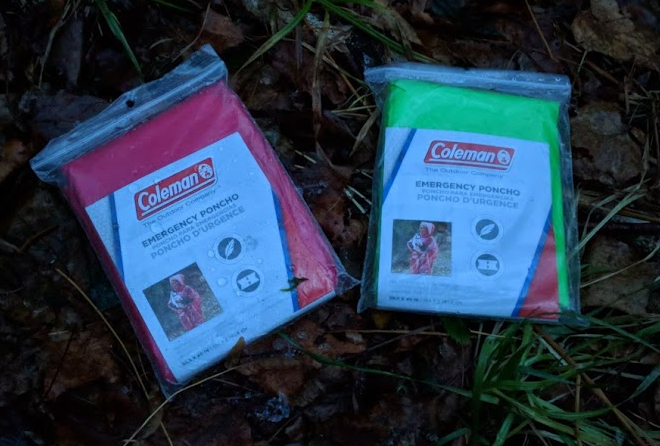
Could We Do Better?
Yes, we could do a whole lot better if we got larger poncho made of more durable material that won't rip or burn as easily. We could have also done better by not using a poncho at all. Tarps and emergency blankets should be much better. Another option would have been to make a hut out of branches and used the ponchos as just a water proofing layer.
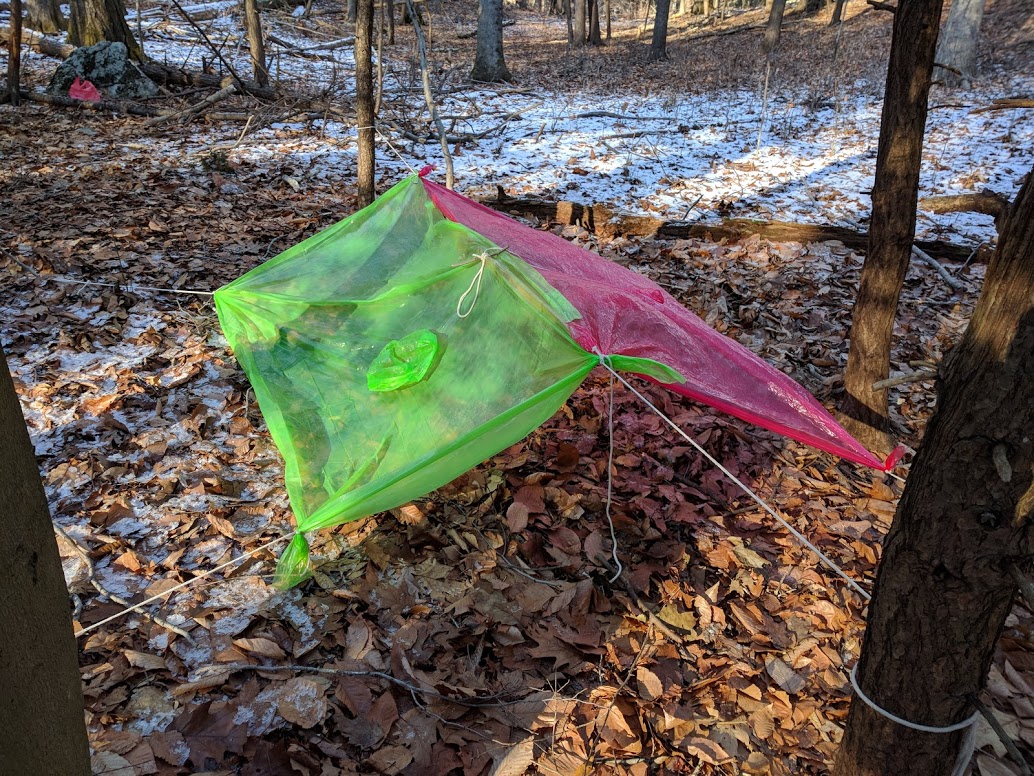
How To Construct a Poncho Tent
Construction of a poncho tent shelter is not hard. So long as you have the materials (ponchos and rope) it shouldn’t be a big deal. The hardest thing you are likely to run into is heavy wind. Also, you don’t want to have to fumble around in the dark without a clear idea of how you want to lay things out. Just make sure you have an idea of how you want it setup. Think through the details ahead of time and maybe test it out. Don’t just say, “Oh yeah, it will be easy. I’ll just string it up between two trees.”
Materials
You are going to want rope or string to tie it down. It doesn't hurt to have a cutting tool for stakes but you don't need one. Another optional item that can help a lot is duct tape. This is good for reinfocing the corners so that they don't rip when you tie them down. It can also help to bind multiple ponchos together and keep out water.
What you get:
- 1 regular sized poncho - tiny lean-to
- 2 regular sized ponchos - small tent tent
- 1 extra large poncho - small tent
- 2 extra large poncho - medium tent or teepee
Steps
The steps will depend on how many rain ponchos you are using.
Steps: Single Regular Sized Rain Poncho
- Run a line between two trees. This will form the ridge of the shelter. Make sure you tie the line as tightly as possible. Make sure it is the correct height. This may take adjusting but through trial and error you should be able to get it right.
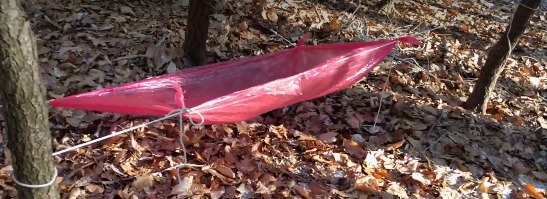
- Sharpen a couple sticks to use as stakes. If you don't have a knife just break some old sticks and use these. A knife makes things easier because you can use fresh, life wood which won't be as brittle. It will allow you to sharpen the stakes so that they last longer and are reusable. This is handy when you want to repeatedly tighten or re-adjust how the tent is staked down.
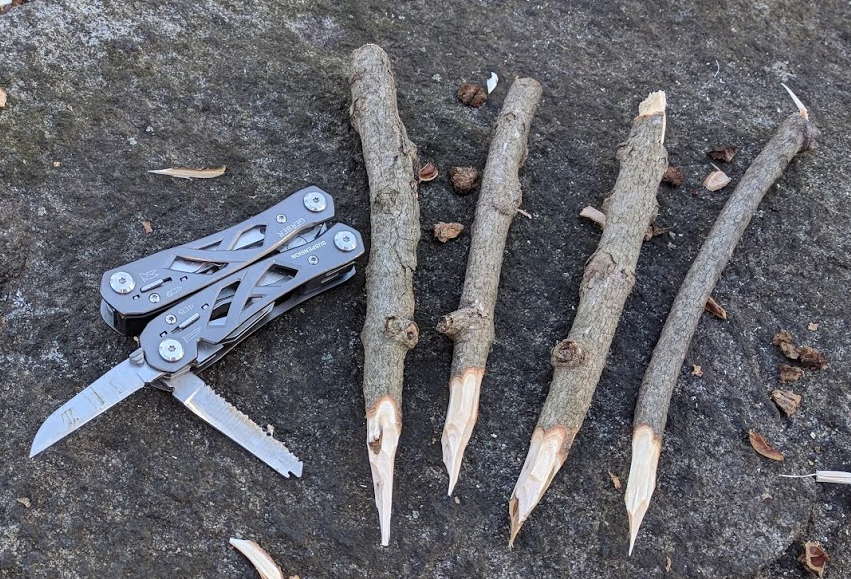
- Split the sides of the poncho so that it forms a single long sheet. You will be running the poncho horizontally. Sometimes they just tear down the side easily. Other times the rain poncho will need to be cut or ripped. This is another case where a knife makes things easier.
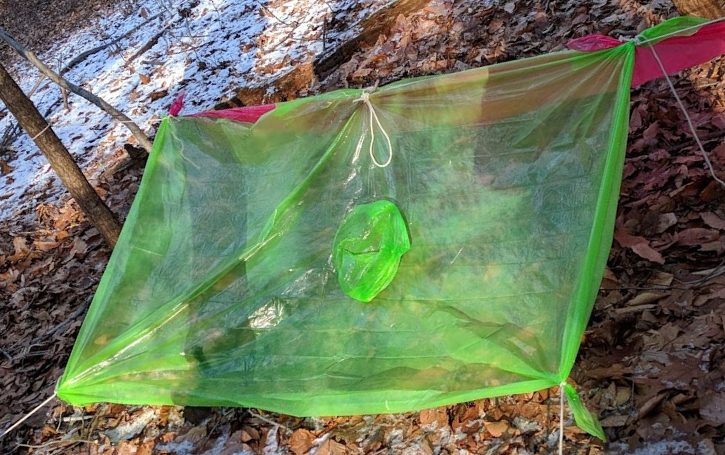
- Connect the two top corners to the line using small pieces of cord for each corner. You will only need about a foot of cord, if that.
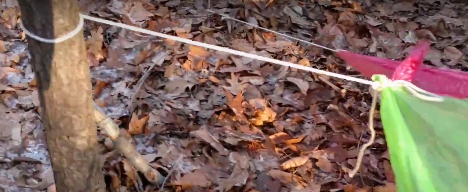
- Connect two pieces of cord to the bottom two corners. ( ~ 2 feet each ) tie these tight but be careful not to rip the poncho. In our experience, these tend to come loose very easily. Duct tape would make this a whole lot easier.
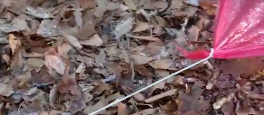
- Tie a loop on the ends of the two cords on the bottom corners. A bowline works great for this. Use the two loops to stake down the poncho. These should be easy to adjust.
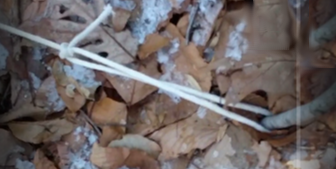
Steps: Three Regular Sized Rain Ponchos
- Run a line between two trees just like in the single poncho method above.
- Sharpen a couple sticks to use as stakes. This will be the same as above except that you will need twelve stakes instead of just two. (unless you double some up)
- Split the sides of the poncho just like before.
- Instead of tying the rain poncho to the ridge, you will just drape it over the line. Do this with all three of them. Let them overlap a bit.
- Stake down the ends with loops as described in the steps for the single poncho version. </ul>
Multi Rain Poncho Considerations
As you can see in the picture below, we have a two poncho shelter. The two ponchos meet in the center. This is not optimal because it requires more tying, it is messy, and it could allow water to leak in more easily. If you are using two or more ponchos, you are going to want to make sure to run them the other way basically hanging them over the ridge. We show how to do this in the video at the top of this page.
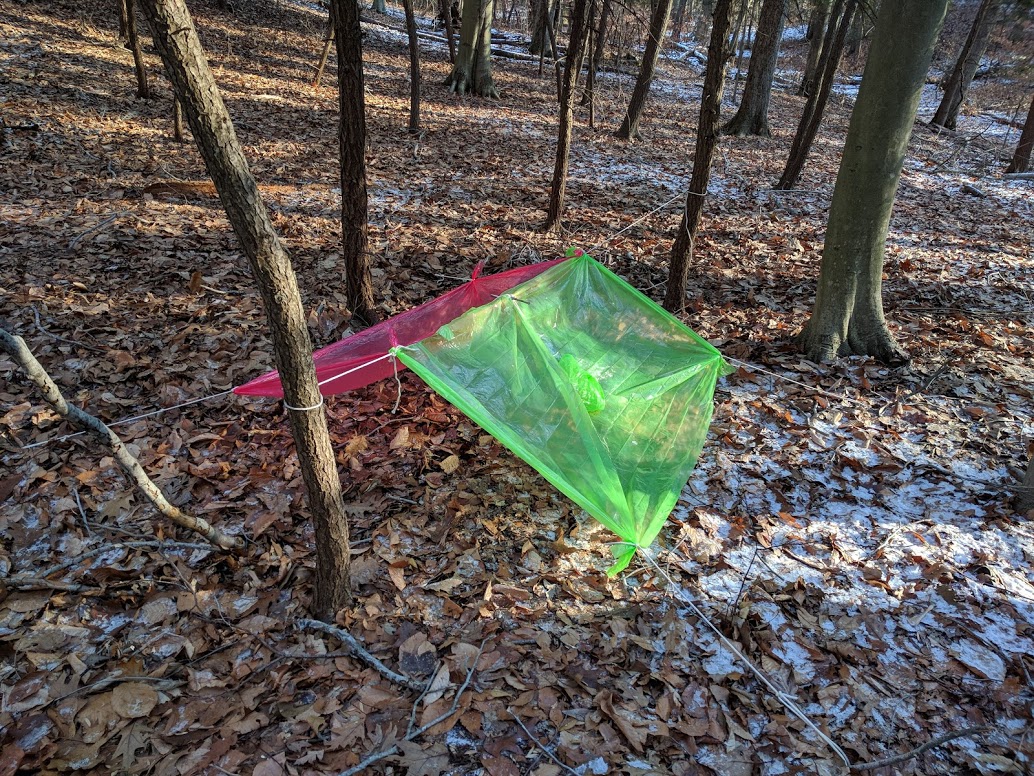
Rain Poncho Shelter - Is It Effective?
The short answer to this is yes. It is an effective type of shelter but you do need to understand its limitations and what situations you would want to use it in. A simple shelter of this type is not meant to be permanent. It is meant to be a temporary shelter that will get you through the night. It is not just temporary but an emergency shelter. This means that you will only really want to use it when you don't have another, better temporary shelter such as a tarp or a tent.
At the very least a tent of this type will server as a good, temporary try place. Even if you plan to construct something different you may just want a quick, dry place to sit and store your gear while you prepare to either build a fire or construct another better shelter. If your next step is to build a fire, you might want to prepare your tinder in a dry place, such as in a quickly constructed poncho tent.
Heat and Staying Dry
It may trap in some heat but not really that much. It isn't very good for keeping warm. A lager, thicker poncho will do a kind of OK job at this if sealed well. If reinforced with branches and lots of leaves, it does have the potential to keep you warm but at that point it is no longer just a simple poncho tent but something much more.
The main point of this type of shelter is not to stay warm as much as it is to stay dry. Keeping dry is important and at the very least this will keep you out of the rain. If you construct one of these carefully, you could sleep in it and stay dry during a rain storm.
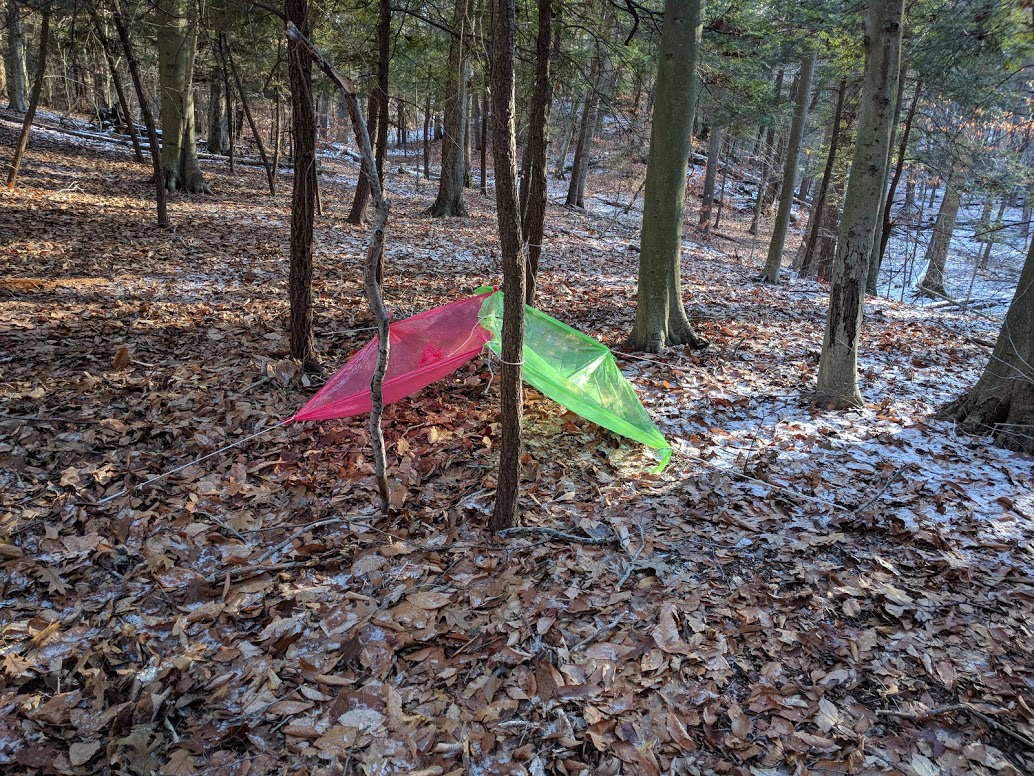
The Ground
This type of shelter doesn't insulate against the ground. A huge percentage of body heat is lost through the ground. You will need to build some type of beding. You can usually do this with a lot of large branches and leaves. If the ground is wet it will pose another issue which can also be resolved by constructing a bed. A more elaborate setup might invovle lashing logs together to form a raised platform.
Alternative - More Elaborate Method
Rather than just build a lean too or tent with your ponchos you might want to build something bigger, stronger, and warmer. You could construct a hut, such as a debris hut or something similar. These can be OK on thier own but can also sometimes leak. You could use the ponchos as an additional water proofing layer for extra effectiveness. Basically, you would construct your hut out of logs and heavy branches. you could cover it with leaves and more branches. You would then add the ponchos as a middle layer. After that you would pile on more leaves and branches to weight down the ponchos. This will protect against the rain and the wind. If made think enough it should trap in a lot more heat making it a reasonably warm shelter.
Look Out For This Stuff
There are a lot of things to look out for. We will cover a few here.
Tearing
Be careful not to tear the poncho. The smaller, cheaper ponchos tend to tear easily. This is another good reason to have a large rain poncho and not just a regular sized one. This is also another reason to carry duct tape. If you do happen to have some, you should be able to reinforce a poncho so that it will stand up against much more abuse.
Fire
Another thing to watch out for is fire. Many ponchos, like the ones pictured above and the ones we used in the video, are extremely flamable. You obviously won't be able to setup your tent near a fire and you definitely won't want to have a fire or stove inside the shelter. This should go without saying but there are options that do allow the safe use of a stove or fire inside tent or teepee.
The Wind
Strong winds could tear one of these shelters right apart. You can mostly solve this problem by reinforcing with duct tape and/or branches.
 .
.